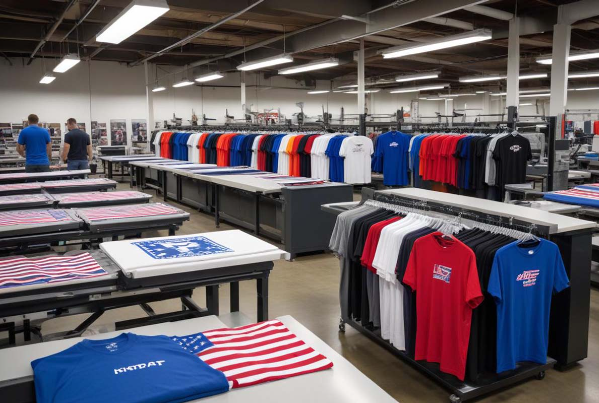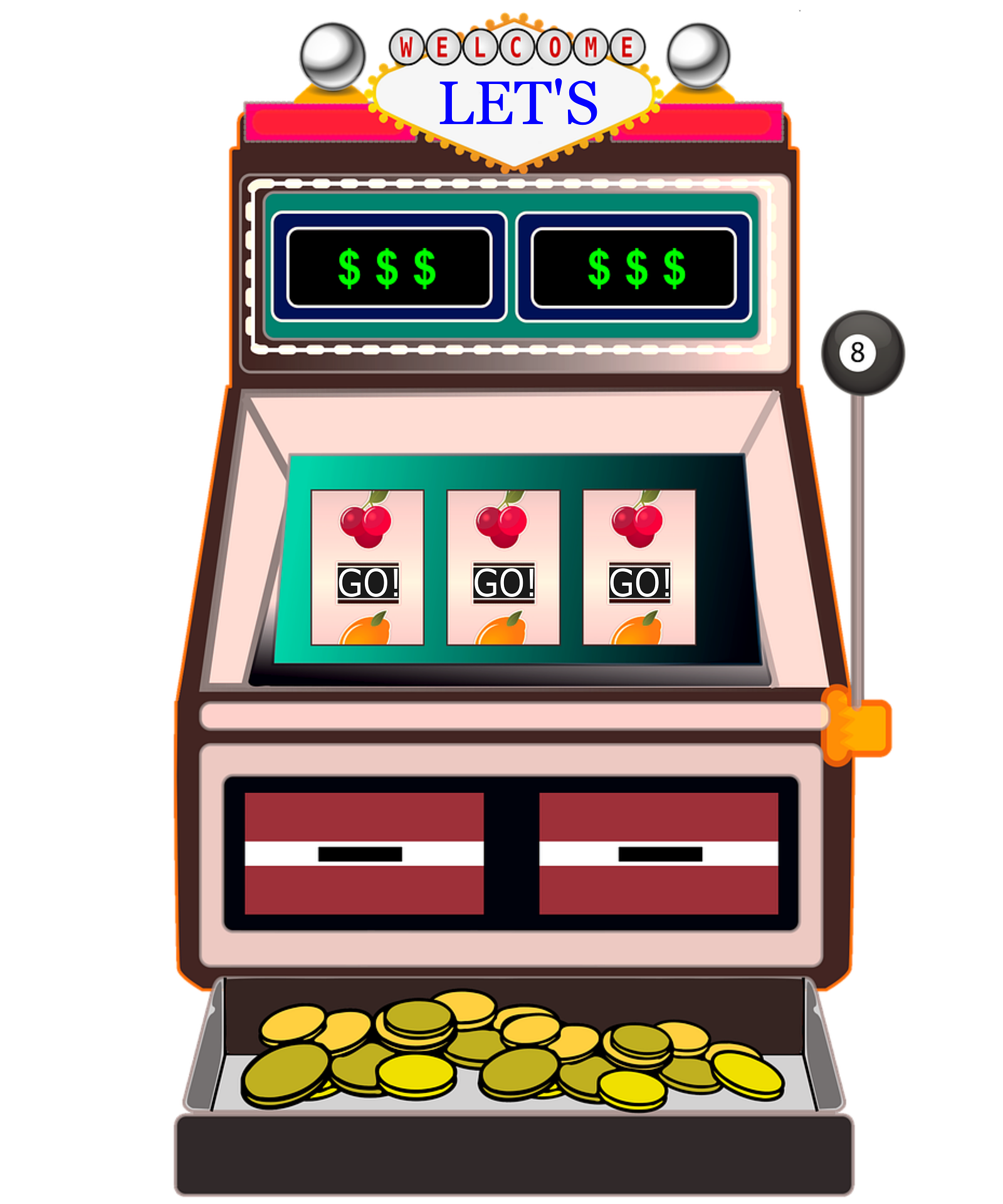Sales & Marketing
How Drop Shipping Order Fulfillment Process Takes Place?

The supply chain is a new term in the field of order fulfillment. The supply chain can be described as the process in which the manufacturer will pick the ordered product and directly ship it to the doorsteps of the customers. The supply chain is a new term that describes the path of product shipping from the warehouse to the doorstep of the customers.
Drop Shipping Service
Usually, drop-shipping services are not mentioned in the supply chain. It is not mentioned in the list of the supply chain then anyone can play the role of drop-shippers like manufacturer, retailer, or wholesaler.
If the product manufacturer wants to ship their products directly to the customers, then the manufacturer will act as the “drop-shippers”. Similarly, the merchant can offer drop-shipping to the customers.
Various third-party logistics service providers offer drop-shipping fulfillment services. If you have started a new eCommerce business, you should search for the best order fulfillment service providers. They will help in safely and quickly shipping your products to the customers.
The dropshipping supply chain involves various players such as manufacturers, retailers, wholesalers. Now, you know what kinds of players are involved in the dropship fulfilment so it is time to dive deep inside this process.
Here, in this article, we are going to discuss in detail the complete process of order fulfillment:
1.Order Placed by Customers
The customer will place the order for a specific product online. The e-store owners will receive the order and they have to consider various important things and some of them are listed below:
- Customers will surf the website and find the desired product. Once the product is selected, online order will be placed.
- Send notification to the customers after receiving the online order. This confirmation mail should be automatically generated and sent to the customer after receiving the online order.
- If the payment has been made online, the paid amount will be automatically deposited into the account of the e-store owner. On the other hand, if the order is placed with cash on delivery, then the amount will be paid after delivering the order to the customer.
2.Order will Be Passed on To Supplier
Once the order is received by the e-commerce owners, it is further transferred to the suppliers. The suppliers will get the complete information regarding the online order placed. The suppliers will get to know whether the payment is received or not.
Also, they will get to know the complete address of the seller. Various sophisticated drop-shipping service providers support automatic order uploading as well as manual order placing. The dropshipping suppliers will start the further process after receiving the order.
3.Shipping of Product
If the ordered product is in stock, the drop shipping supplier will collect the product from the warehouse maintained by the manufacturer and directly ship the product to the customer’s doorstep. The supplier will pick the product, pack it, and load it so that the product can reach the destination as soon as possible.
The address of the customer will be printed over the packet along with the logo. In addition to this, the invoice will also appear over the packet along with the return address. The biggest benefit of the drop-shipment order fulfillment process is a quick turn -around time. It means that the customers will receive the ordered product as soon as possible.
The reputable drop-shipping service providers will be able to deliver the products at the doorsteps of the customers. Sometimes, the drop shipping service providers will ship the products directly to the doorstep of the customers.
4.Send Alerts to Customer
Once the order is packed and shipped, the tracking number will be sent to the customer. The email notifications will act as an interface and keep the customers updated. Finally, when the order is delivered, a notification will be sent to the customer through email and phone message.
When the order is delivered, the final notification will be sent to the customers. If the order is received, then the suppliers will collect the payment (in case of cash on delivery). The alert messages are important to keep your customers updated.
The alert messages will help in gaining the trust of customers. You should send the alert message after receiving the order, packing the product, shipping the product, and final message after delivering the product.
Final Words:
The process of order fulfilment is quite critical and involves various stages. In this type of supply chain, the drop-shippers are invisible. The end customers will not be able to contact the drop-shippers. When the order is received by the customer, only the logo, return address and invoice will be mentioned over the packet. In case the customer receives the wrong product, the customer can directly contact the e-store owners.
Sales & Marketing
Innovative Blank Apparel Customization

Blank apparel offers a versatile canvas for creativity and personalization, allowing individuals and businesses to create unique and stylish garments. With the rise of DTF transfers and other customization techniques, it’s easier than ever to transform basic apparel into eye-catching pieces. In this blog, we will explore innovative methods for customizing blank apparel, the benefits of using Ready-to-Press designs, and tips for achieving the best results.
Understanding DTF Transfers
DTF transfers (Direct-to-film transfers) are a cutting-edge printing technology that allows for detailed and vibrant designs to be applied to fabric using a heat press. Unlike traditional screen printing, DTF transfers offer greater flexibility and detail, making them ideal for intricate designs and multi-color prints. The process involves printing the design onto a special film, which is then transferred onto the fabric using heat and pressure.
Benefits of Teacher Transfers Designs
Teacher Transfers designs are pre-made transfers that are ready to be applied to garments. This convenience saves time and effort, allowing for quick customization without the need for extensive setup or equipment. Ready to Press designs are perfect for small businesses, hobbyists, and anyone looking to create custom apparel with minimal hassle.
Personalized T-Shirts for 4th July Independence Day
Create patriotic apparel for the 4th July Independence Day celebrations with custom DTF transfers. Design unique t-shirts featuring stars, stripes, and other patriotic symbols. Using Ready to Press transfers ensures a quick and easy application process, allowing you to produce festive apparel in no time.
Customized Hoodies with Unique DTF Designs
Transform plain hoodies into statement pieces with DTF designs. Whether it’s a cool graphic, a motivational quote, or a custom logo, DTF transfers can add a unique touch to your hoodies. Choose Black Apparel for a bold and Black stylish look that highlights the vibrant colors of the transfers.
Branded Merchandise for Small Businesses
Small businesses can benefit from custom Blank Apparel as part of their branding strategy. Use DTF heat transfers to add your business logo, tagline, or artwork to t-shirts, caps, and tote bags. This not only promotes brand recognition but also provides a professional and cohesive look.
Sports Team Apparel with DTF Prints
Customizing sports team apparel is another excellent use for DTF prints. Whether it’s jerseys, practice shirts, or fan gear, DTF transfers can create high-quality, durable designs that withstand the rigors of athletic activity. DTF prints for sale can also be offered as merchandise for fans.
Fashion Forward with Custom Tote Bags
Tote bags are a popular and practical accessory. Customize blank tote bags with DTF transfer prints featuring trendy designs, inspirational quotes, or personalized messages. These custom bags make great gifts, promotional items, or additions to your product line.
Seasonal Apparel for Holidays and Events
Create themed apparel for holidays and special events using DTF transfers ready to press. From Halloween costumes to Christmas sweaters, the possibilities are endless. Ready-to-Press transfers make it easy to produce seasonal apparel without investing in expensive equipment.
Where to Buy DTF Transfers
Finding high-quality DTF transfers is essential for achieving the best results. Look for reputable suppliers that offer a variety of designs and customization options. When searching for where to buy DTF transfers, consider factors such as print quality, durability, and ease of use.
Conclusion
Customizing blank apparel with DTF transfers offers endless possibilities for creativity and personalization. Whether you’re creating unique t-shirts for a holiday celebration, branded merchandise for your business, or stylish accessories, DTF transfers provide a versatile and efficient solution. Embrace the convenience of ready-to-press designs and explore the many ways you can transform blank apparel into stunning custom pieces.
FAQ
- What are DTF transfers?
- DTF transfers are a printing technology that applies detailed and vibrant designs to fabric using a heat press.
- How do I apply for DTF transfers?
- DTF transfers are applied using a heat press, which involves pressing the transfer onto the fabric at a specific temperature and pressure.
- What is Ready to Press?
- Ready to Press refers to pre-made transfers that are ready to be applied to garments with a heat press.
- What types of blank apparel are best for DTF transfers?
- High-quality, durable fabrics such as cotton, polyester, and blends are ideal for DTF transfers.
- Where can I buy DTF transfers?
- You can purchase DTF transfers from reputable suppliers that offer a variety of designs and customization options.
- Can I use DTF transfers on dark-colored apparel?
- Yes, DTF transfers work well on both light and dark-colored apparel, including Black Apparel.
- How long do DTF transfers last?
- DTF transfers are known for their durability and can last through many washes without fading or peeling.
- Are DTF transfers safe for all fabrics?
- DTF transfers are suitable for most fabrics, but checking the fabric’s heat tolerance before applying is essential.
- Can I create custom designs with DTF transfers?
- DTF transfers allow for intricate and custom designs, making them perfect for personalized apparel.
- How do I care for apparel with DTF transfers?
- Wash the apparel inside out in cold water and avoid using bleach or harsh detergents to maintain the transfer quality.
Sales & Marketing
How to Target and Optimize Your E-commerce Ads for Conversions

E-commerce is a cutthroat industry, which most businesses realize once they step into it. With many ditching brick-and-mortar stores for the convenience of online shopping, the competition has never been fiercer. It’s like there’s a never-ending quest to try to capture your audience’s attention!
However, having a stellar product doesn’t cut it anymore. You need to get it in front of the right eyes and convince them it’s worth buying. Marketing your business is the play here, as well as optimizing your e-commerce ads and campaigns.
Think about it: what good is the perfect ad if you show it to someone who will never buy what you’re selling? You want your campaigns to reach those who are not only interested but ready to convert. Continue reading to discover how to target and optimize your e-commerce ads to get the necessary conversions.
The Growing Saturation of E-commerce Advertising
E-commerce advertising is getting saturated, so getting your ads noticed by your target audience will be an uphill climb. 2023 global e-commerce sales hit around US $5.8 trillion, with experts predicting it to surpass US $8 trillion by 2027.
Seeing those numbers means a lot of potential to get a piece of the pie, but that also means a lot of noise to cut through. Users are constantly bombarded with left, right, and center ads, making capturing their attention challenging for any single ad.
Targeted advertising is the key to surviving—and thriving—in the saturated market. By homing in on your ideal customer base, you can make your ad spending more efficient and safeguard that your ads reach those most likely to convert.
Targeting Strategies for E-commerce Ads
To hit the mark with your e-commerce ads, you need to know your target. You need to perform some market research. Here’s a breakdown of the various audience targeting options offered by advertising platforms:
1. Demographics
This option includes age, location, income, gender, and more. Tailoring your ads based on these factors guarantees you’re speaking directly to those most likely interested in your product.
2. Interests
Dive into your audience’s shopping habits, browsing behavior, and preferred product categories. Platforms like Facebook and Google allow you to target users based on these interests, keeping your ads relevant.
3. Lookalike audiences
These are users who are like your existing customer base. You can expand your reach to new, highly relevant potential customers by targeting lookalikes.
4. Retargeting
Ever notice ads for a product you just viewed online following you around? That’s retargeting. It’s an effective way to re-engage users who have interacted with your brand before but haven’t yet converted.
5 Tips for Optimizing for Conversions: E-commerce Ad Best Practices
Now that you know who to target, here are some ways to make your ads irresistible:
1. Crafting compelling ad copy
The words you use in your ad must be clear, concise, and packed with benefits. Speak your audience’s language and highlight what makes your product a must-have.
2. Using high-quality visuals
A picture is worth a thousand words, and a video even more. Use eye-catching product images and captivating videos to grab attention and showcase your offerings with the best lighting and color grading.
3. Landing page optimization
Ensure that your landing page is related to your ad so you provide a seamless user experience. A clutter-free, easy-to-navigate landing page can significantly boost conversions.
4. A/B testing and refinement
Experiment with ad variations, including copy, visuals, and calls to action. A/B testing helps you recognize the most effective combinations for your audience, allowing you to refine your ads for better performance.
5. Conversion tracking and analytics
Tracking conversions and analyzing ad performance using analytics tools is crucial because it helps you understand what’s working and what’s not so you can keep optimizing your campaigns for better results.
Mastering the Art of E-commerce Ads
Your success in the e-commerce industry lies in getting the attention of your target audience by effectively targeting and optimizing your ads. By understanding your customers’ demographics and behaviors and using advanced targeting options, your ads will resonate with the right people.
Crafting compelling ad copy, using captivating visuals, and optimizing your website’s landing pages are all crucial steps to boost conversions. However, it doesn’t end there. The key to sustained success is the ongoing process of monitoring, testing, and refining your campaigns.
Sales & Marketing
Unveiling the Ultimate Winning Products List: A Comprehensive Guide to Dropshipping Success

In the dynamic realm of e-commerce and dropshipping, finding winning products that resonate with your target audience is the key to success. However, identifying these products amidst the vast sea of options can be a daunting task. To simplify this process and provide dropshippers with a competitive edge, Minea has curated the ultimate Winning Products List – a carefully selected collection of high-potential products that are primed for success in the ever-evolving world of e-commerce.
Unlocking the Potential of Minea’s Winning Products List: A Game-Changer for Dropshippers
Minea’s Winning Products List is more than just a compilation of products; it’s a strategic resource designed to empower drop shippers to make informed decisions and drive profitability in their businesses. With its curated selection and in-depth analysis, Minea’s Winning Products List offers dropshippers valuable insights and opportunities to stay ahead of the competition and achieve success in the fast-paced world of dropshipping.
Exploring Minea’s Winning Products List Key Features: Your Pathway to Dropshipping Success
Curated Selection: Discover High-Potential Products Market Analysis: Understand Market Trends and Demand Product Insights: Access Detailed Product Information Competitor Analysis: Gain Competitive Intelligence
Harnessing the Power of Curated Selection: Discover High-Potential Products
Finding winning products is the cornerstone of dropshipping success, and Minea’s Winning Products List streamlines this process by offering a carefully curated selection of products that have been vetted for their potential to perform well in the market. By leveraging Minea’s expertise and market insights, dropshippers can discover high-potential products with confidence and focus their efforts on products with the greatest likelihood of success.
Simplifying Market Analysis: Understand Market Trends and Demand
Staying abreast of market trends and consumer demand is essential for identifying winning products in the highly competitive dropshipping landscape. Minea’s Winning Products List provides dropshippers with valuable market analysis and trend data, allowing them to make data-driven decisions and capitalize on emerging opportunities. By understanding market dynamics and consumer preferences, dropshippers can align their product selection with market demand and maximize their chances of success.
Accessing Product Insights: Detailed Product Information at Your Fingertips
Detailed product information is crucial for evaluating the viability of potential winning products and making informed decisions. Minea’s Winning Products List offers dropshippers comprehensive product insights, including product descriptions, images, pricing information, and more. By accessing detailed product information, dropshippers can assess product potential, identify unique selling points, and make informed decisions about which products to add to their inventory.
Gaining Competitive Intelligence: Analyze Competitor Strategies
Understanding competitor strategies is key to gaining a competitive edge in the world of dropshipping. Minea’s Winning Products List allows dropshippers to analyze competitor products and strategies, providing valuable insights into market dynamics, pricing strategies, and marketing approaches. By studying competitor products, dropshippers can identify gaps in the market, differentiate their offerings, and develop strategies to outperform competitors.
Advanced Features for Enhanced Performance: Taking Your Dropshipping Business to the Next Level
Product Performance Metrics: Track Product Success Price Monitoring: Stay Competitive in the Market Inventory Management: Optimize Product Selection and Availability
FAQs: Answering Your Burning Questions About Minea’s Winning Products List
What criteria does Minea use to select products for the Winning Products List? How frequently is the Winning Products List updated? Can I request specific products to be added to the Winning Products List? Is the Winning Products List suitable for beginners in dropshipping? How can I integrate the Winning Products List into my existing dropshipping business?
Conclusion
As we conclude our exploration of Minea’s Winning Products List and its role as the ultimate resource for dropshipping success, we are reminded of the transformative power of curated selection, market analysis, and competitive intelligence in driving profitability and growth in the dropshipping industry. With its curated selection, comprehensive insights, and advanced features, Minea’s Winning Products List empowers dropshippers to discover high-potential products, understand market trends, and outperform competitors in the fast-paced world of dropshipping.
Whether you’re a seasoned dropshipper looking to expand your product portfolio or a newcomer seeking guidance in the world of dropshipping, Minea’s Winning Products List is here to support you every step of the way.
-

 Sports & Games4 years ago
Sports & Games4 years agoLet’s Dive Into To Know about Poe Ninja
-

 News & Entertainment2 years ago
News & Entertainment2 years agoNike reps shoes
-

 Business & Finance5 years ago
Business & Finance5 years agoLine Of Business
-

 Sports & Games4 years ago
Sports & Games4 years agoIs a Toto site required for food verification?
-

 Business & Finance4 years ago
Business & Finance4 years ago10 Best Online Platforms to Buy and Sell Cars in Karachi
-

 Sports & Games4 years ago
Sports & Games4 years agoHow To Get Registered At Track Wrestling Forum
-

 Sports & Games4 years ago
Sports & Games4 years agoHow will toto site help you find the best safe playground?
-

 Sports & Games4 years ago
Sports & Games4 years agoHow Can You Easily Win Lottery Games?

